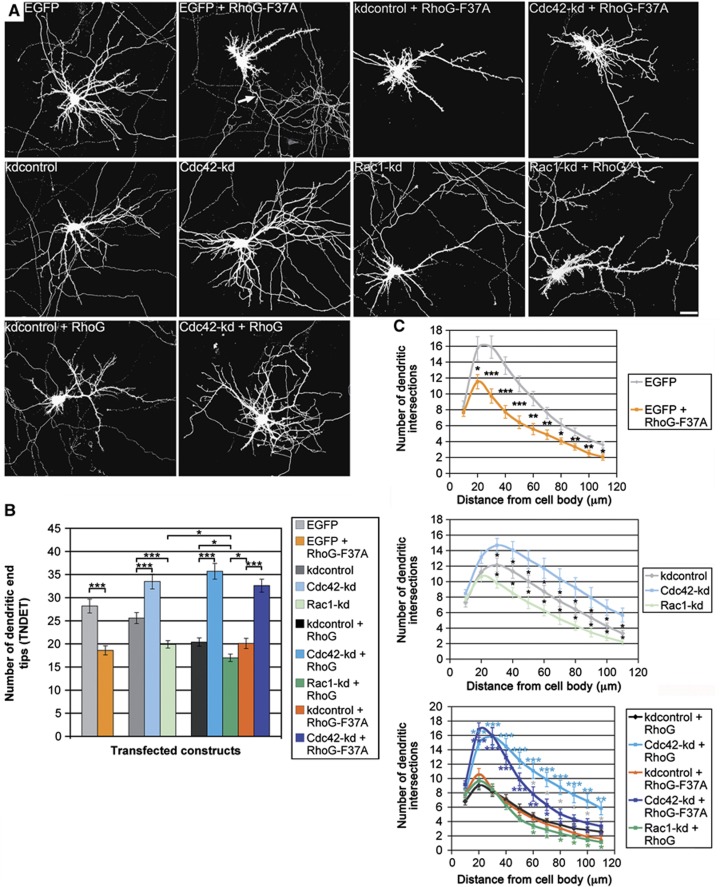Figure 4.
RhoG inhibits dendritic branching dependent on Cdc42. (A) The dendritic phenotype of hippocampal neurons, transfected with the indicated constructs at DIV7, was analysed after staining for GFP at DIV7+3. Note that RhoG-F37A led to a considerable reduction in dendritic tree complexity, but still increased axonal branching (arrow). Scale bar, 15 μm. (B) RhoG-F37A decreased TNDET to a similar degree as RhoG did. Knockdown of Cdc42 increased, whereas knockdown of Rac1 decreased TNDET. Combining Rac1 knockdown with RhoG overexpression synergistically decreased TNDET. Under the condition of Cdc42 knockdown performed by expression of Cdc42-kd, RhoG no longer decreased TNDET. Under these conditions, TNDET equals that of Cdc42-kd expression alone. Similarly, knockdown of Cdc42 led to a rescue of TNDET when co-expressed with RhoG-F37A. Mean values (n=40 neurons)±s.e.m. (***P<0.0005; *P<0.05). (C) Neurons transfected as described above were analysed by Sholl analysis for all experimental conditions. For each point of the Sholl graph, the mean values (n≥24 neurons)±s.e.m. are shown (***P<0.0005; **P<0.005; *P<0.05). Light blue stars, Cdc42-kd+RhoG compared with kdcontrol+RhoG; dark blue stars, Cdc42-kd+RhoG-F37A compared with kdcontrol+RhoG-F37A; green stars, Rac1-kd+RhoG compared with kdcontrol+RhoG; orange stars, kdcontrol+RhoG-F37A compared with kdcontrol+RhoG; grey stars, Cdc42-kd+RhoG compared with Cdc42-kd+RhoG-F37A.

